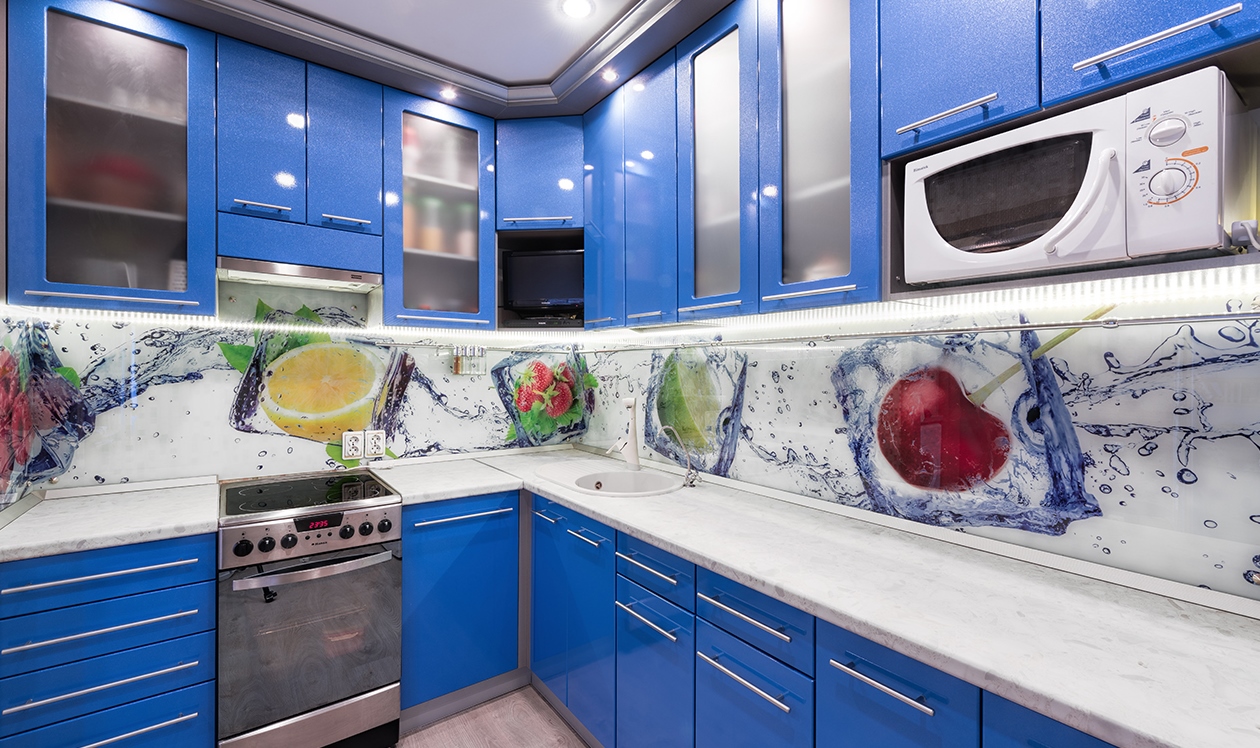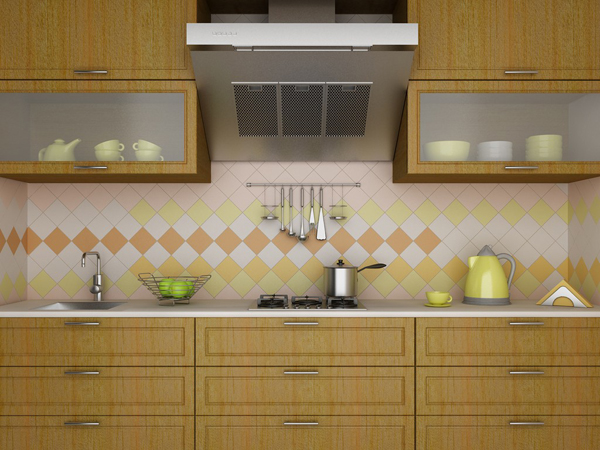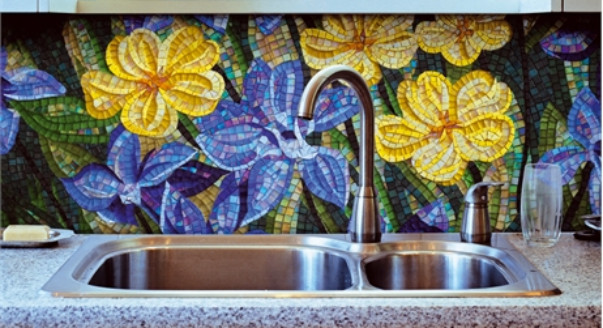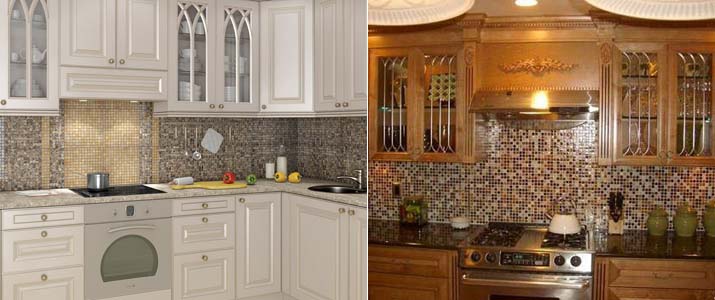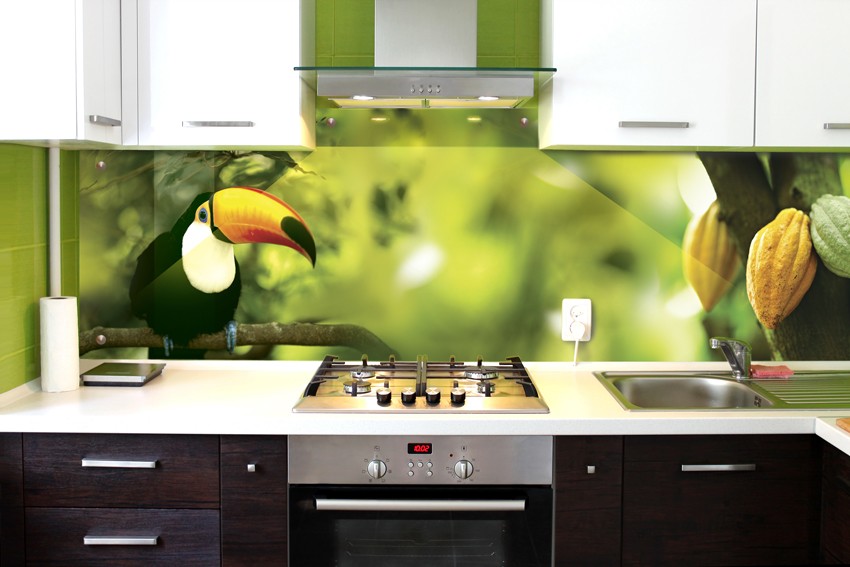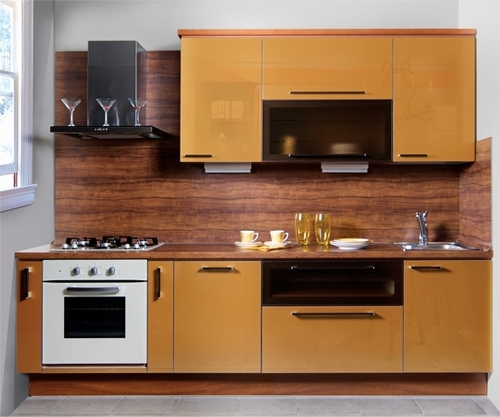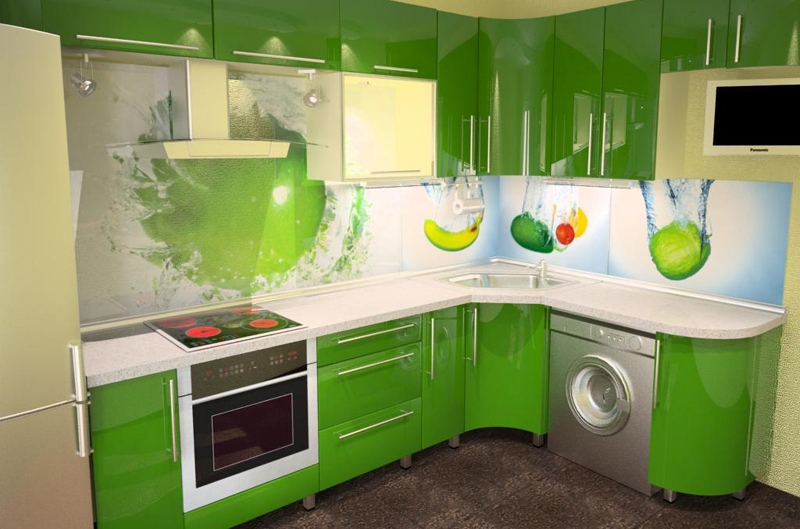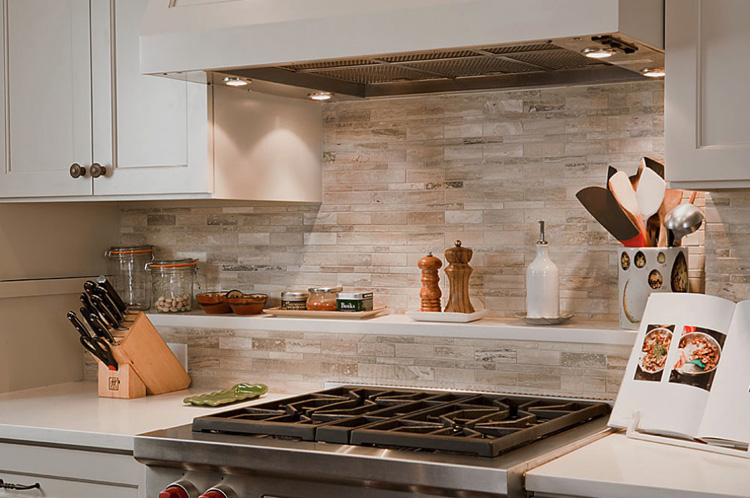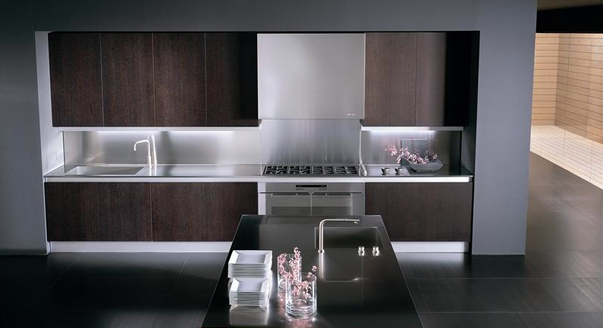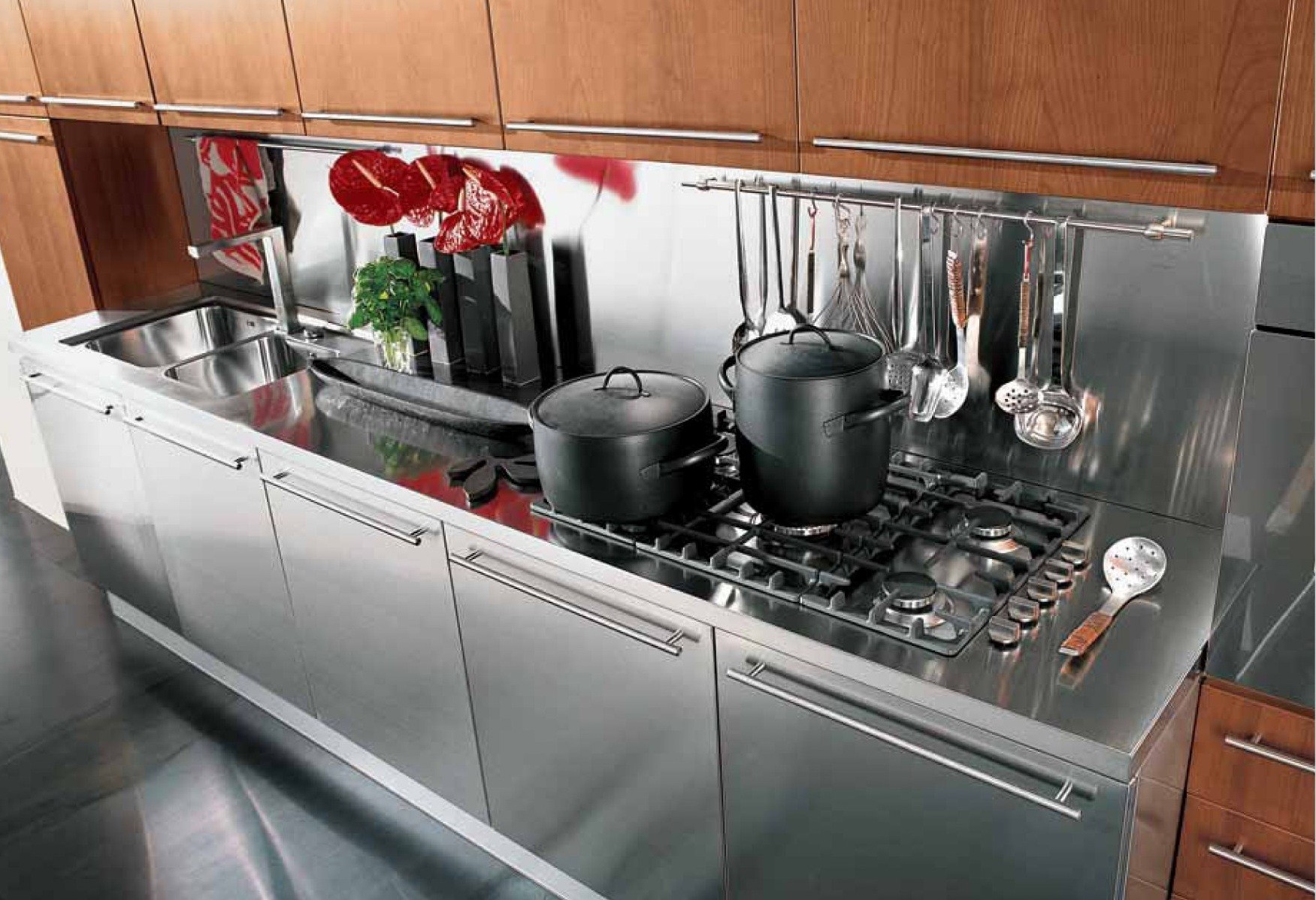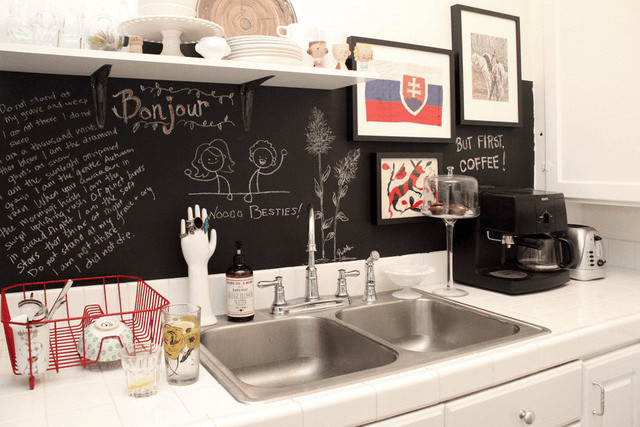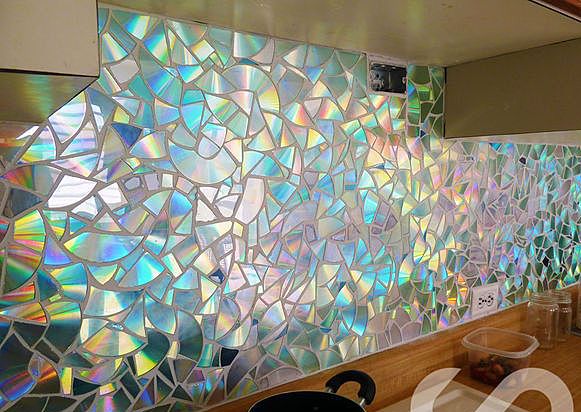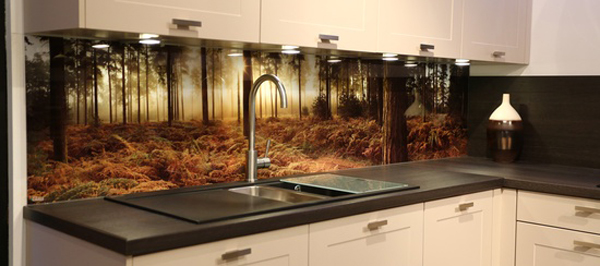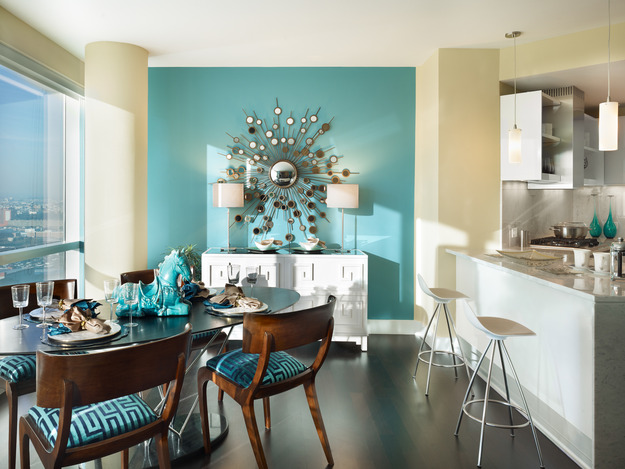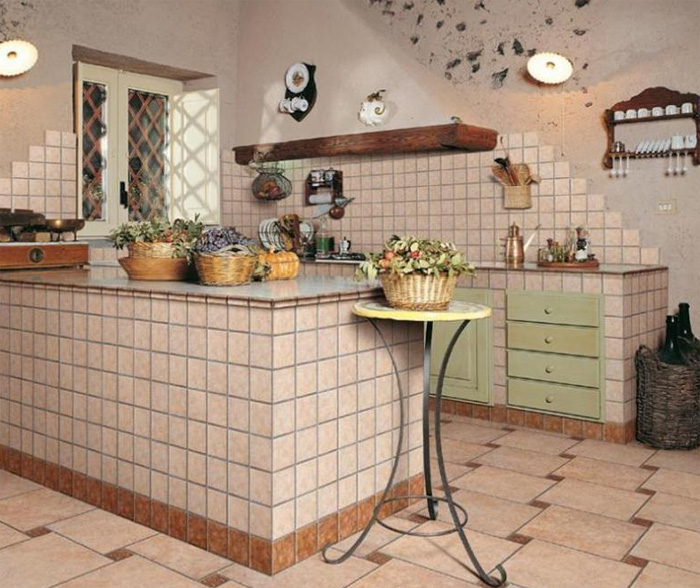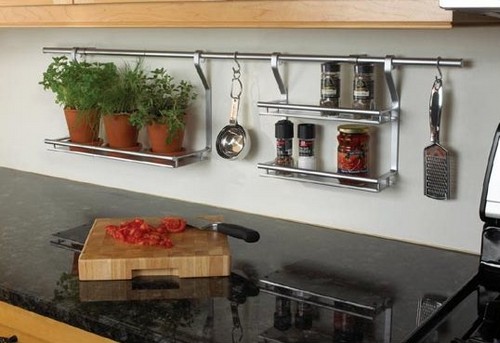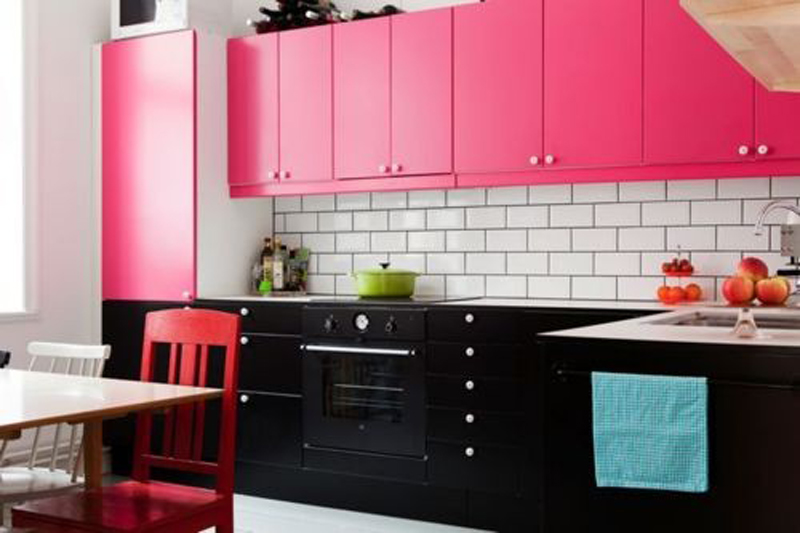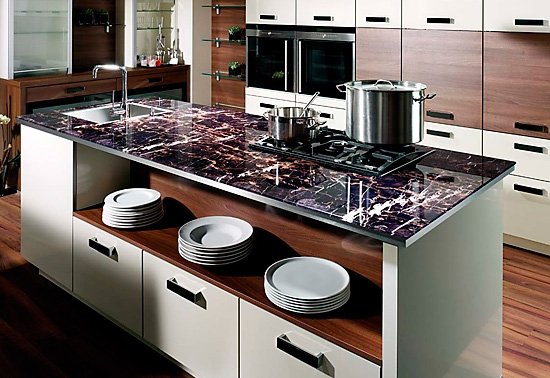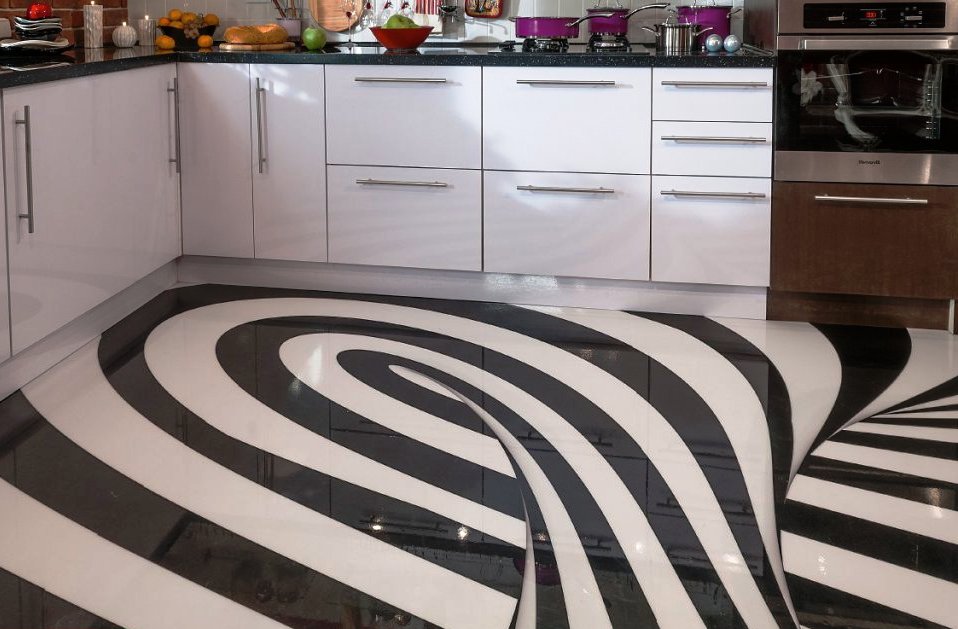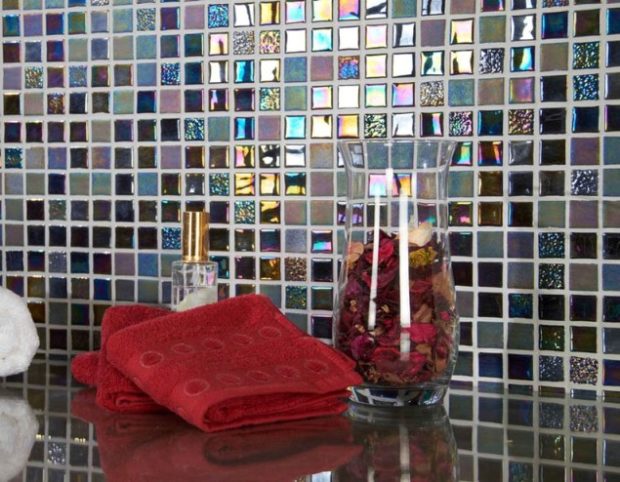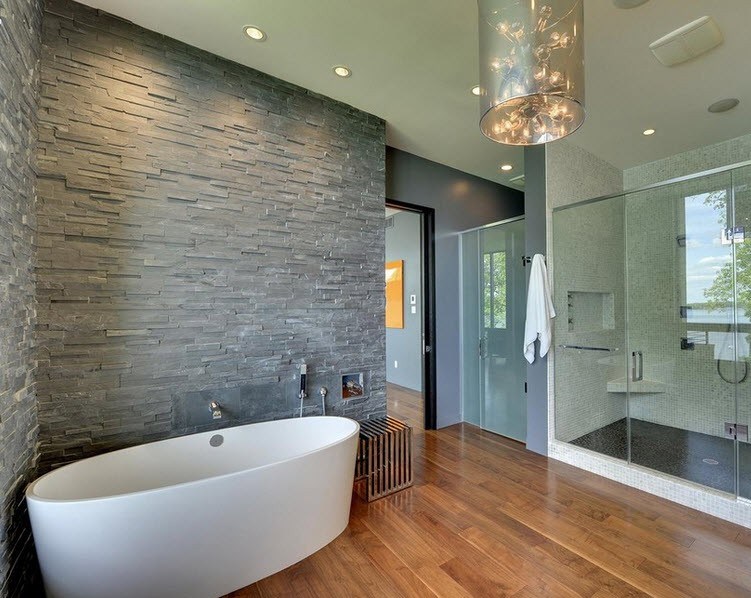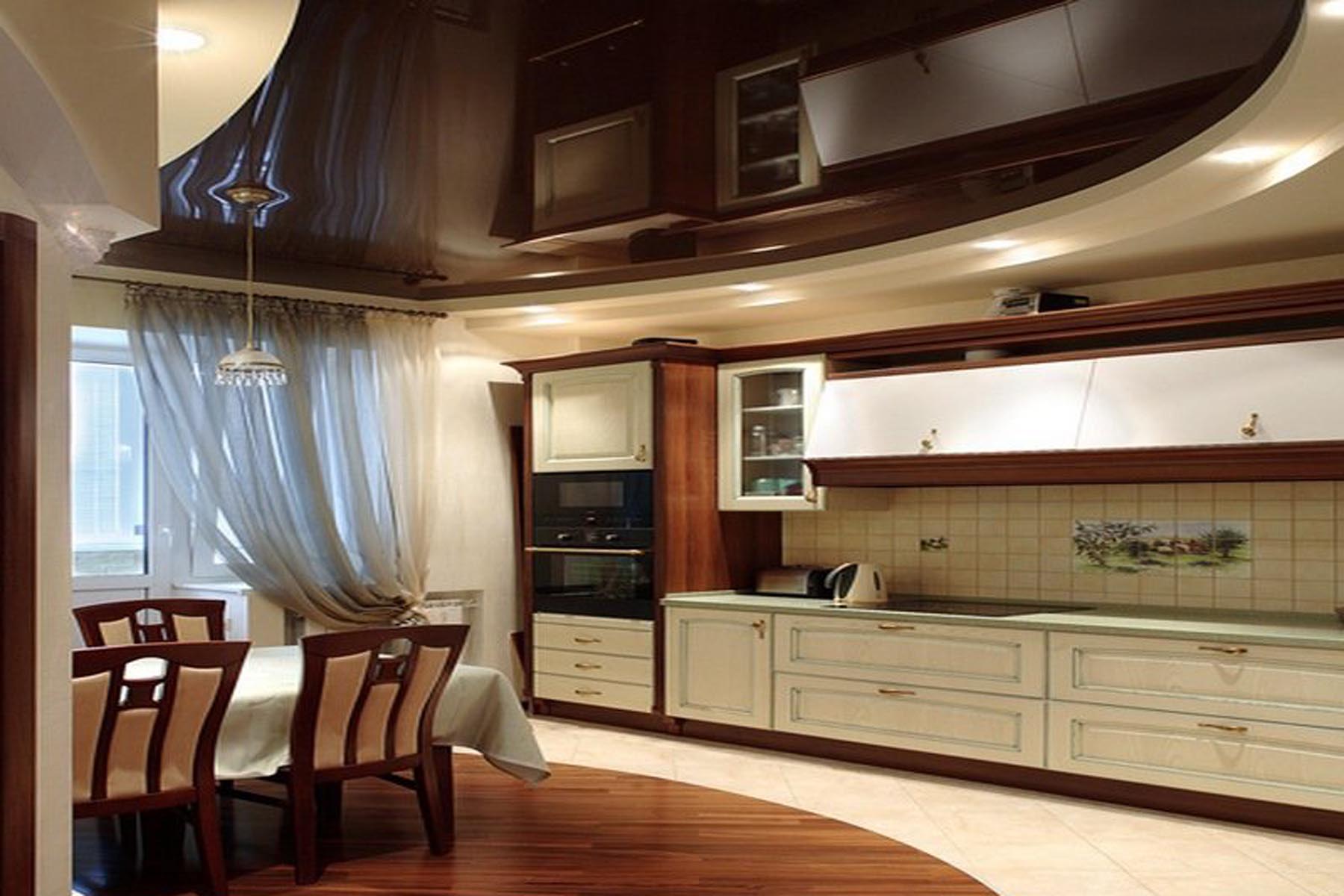11 tips for finishing an apron (work wall) in the kitchen
An apron protects the walls around car wash, slabs and work surface on the the kitchen from fat splash, water, dust and other negative influences. To the working wall put forward a number of requirementsincluding high strength and practicality, ease of care, the ability to withstand moisture and high temperatures. In addition, the apron should have good external data, since it occupies a significant part of the kitchen. What materials can be used to finish the working wall in the kitchen, what are their main advantages, and what else needs to be considered when choosing a finishing material?
No. 1. What materials can be used to finish the apron?
To all the above requirements for the material of the kitchen apron, it is worth adding that it should have maximally smooth surface and be low porous. Due to this, the ability of the material to absorb moisture is reduced, and ease of care, on the contrary, is increased.
Today for the organization of the apron use the following materials:
- ceramic tile;
- mosaic;
- glass;
- PVC panels;
- natural and decorative stone;
- MDF panels;
- metal;
- plaster, paint and other materials.
Each of these materials has its own advantages, disadvantages and features, and then we will dwell on the characteristics of each of them.
No. 2. Ceramic tile: immortal classic
Most of us still choose to finish our kitchen apron. ceramic tile, and for good reason. it one of the best and most practical options, a he has a lot of advantages:
- high strength;
- heat resistance;
- simplicity in leaving;
- huge assortment: you can choose a tile of any size, color and with any pattern;
- relatively easy installationwhich, with a certain dexterity, can even be done independently.
Using a tile, you can create a variety of effects, for example, highlight some zone with the help of a material of a certain color: with a decorative tile, you can highlight the area near the stove or sink, and lay the rest of the tile simpler. It is worth noting that dirt can accumulate in relief ceramic tiles and in inter-tile seams, so it is better to choose the most smooth material, and make the seams thin or coat them with varnish. When combining tiles over the work area and other types of finishes in the rest of the kitchen, it is better not to dwell on the same color. The working area is better to separate the color from the dining area in the kitchenthus performing spectacular zoning.
No. 3. Mosaic: space for imagination
Via mosaics can create the most unthinkable patterns and even whole pictures. A kitchen apron can be a real work of art, and the performance of the mosaic is very good. Among the main advantages it is worth noting:
- moisture resistance;
- heat resistance;
- ease of care and hygiene;
- strength;
- wear resistance and durability;
- unique appearance.
These are all the general characteristics of a mosaic, because it can be of different types and made of different materials:
- ceramic mosaic repeats all the characteristics of ceramic tiles, only from tiles 2 * 2 cm in size you can lay out any patterns;
- glass mosaic perfectly shows itself in operation, as it is completely inert to moisture and fire. In addition, this material may slightly change color depending on the lighting conditions, which makes it even more unique;
- stone mosaic it is quite rare due to the high price, and its care is difficult;
- metal mosaic It is quite durable and practical, but you don’t have to hope for a variety of shades and colors.
Of the minuses of the mosaic can be noted the complexity of the installation process and, in some cases, the cost. Need a perfectly flat surface, and to grouting should be treated very carefully so that dirt does not accumulate in them. Otherwise, it is a wonderful material for finishing an apron in the kitchen.
Number 4. Glass: unusual and spectacular
Glass has been used to decorate kitchen aprons not so long ago, but in vain. This is a wonderful material that meets all the requirements put forward for this area. Patterned glass panels are also called. skinned. They are made of thick tempered glass and decorated in various ways: by sandblasting, placement inside 3D polycarbonate material or using ultraviolet printing.Sandblasting involves the impact on the glass surface of small abrasive particles under high pressure, as a result of which you can get a relief volumetric pattern, and for an even more effective result, some areas can be painted with colored enamels. Using UV printing, you can also get realistic beautiful images, and apply any ornaments and colors to the glass.
The main advantages of this method of decoration:
- high strength, because tempered glass is used, which is difficult to break, and even with a strong impact it is not able to injure anyone, because it shatters into fragments with blunt edges;
- practicality and ease of care, resistance to aggressive detergents, while the appearance of the surface remains unchanged for many years;
- the absolute seamlessness of the coating, which provides excellent hygiene, because dirt will not accumulate in the joints and microorganisms will develop;
- unique appearance, because you can apply absolutely any image: at least fruit, at least a picture, at least your own photo.
As you can see glass panels, or skinned, differ in high operational and external characteristics, but are used so far not so often in view of high cost of material and arranging an apron that way. Although it’s easy to wash the glass apron, you will have to do it regularly, because all splashes and spots are clearly visible on its surface. It will be very difficult to change the image if desired, and you will have to think through the interior in advance, because if it later turns out that you need to organize railing in the area of the working area, then this will not work. But the glass apron can be very efficiently illuminated, and it will acquire a 3D effect.
No. 5. PVC panels: cheap and practical
Uses for finishing a kitchen apron plastic panels - this is one of the most budgetary ways organize the space of the working area. In addition to price, this material has mass of other advantages:
- ease of installation, because almost everyone can handle it;
- easy care, panels are very easy to clean and withstand even exposure to aggressive chemicals;
- moisture resistance;
- durability, and plastic over time does not lose its original appearance;
- the ability withstand temperatures up to 1150FROM, but before buying it is important to ask about the fire resistance of the material;
- seams between panels can be decorated with special cornersthat can even be matched to the tone of railing or kitchen furniture.
Plastic panels do not shine with a variety of colors: you can choose the right material for the kitchen interior, but it will be far from unique, and it is quite possible that you will find exactly the same thing in the neighboring kitchen. But it’s not so scary. Much worse that plastic panels scratch easily, so you must be careful when handling them.
No. 6. PVC film - a temporary solution
If you need to make a quick and inexpensive temporary repair, it makes sense to look at the PVC film. For a while, just before you make a normal repair, it can serve normally. Her the main advantage is low cost. In addition, the range of colors of such films is simply huge: natural materials, landscapes, ornaments, etc. You can cope with sticking such a material yourself, the film is resistant to mechanical damage, but on this it pros end up.
This material is able to gradually fade under the influence of sunlight, it is afraid of high temperatures, and if damaged it cannot be restored. You can use it as a temporary decoration for the kitchen, but it is not suitable for permanent use.
Number 7. MDF panels: a budget and practical option
Run a kitchen apron possible from MDF panels: it will cost inexpensively, but it will be much more practical than finishing with a film or PVC plates. Key Benefits this method of finishing the working wall:
- moisture resistance and strength;
- quick production, because, as a rule, such an apron is created together with kitchen set;
- ease of installation. The walls do not need thorough preliminary preparation, and you can fix the panels either to the frame or using liquid nails. If you need to replace the apron, this can be done very simply - you do not even need to remove the furniture;
- seamless coating, and this is important in a kitchen work area;
- beautiful appearance: such panels can imitate ceramic tiles, stone, wood, brick, and recently, a bright pattern has been applied to the material so that the apron becomes a real highlight of the kitchen.
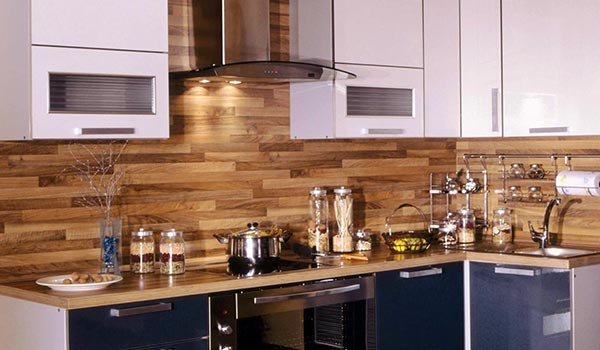 But the material, unfortunately, there are cons:
But the material, unfortunately, there are cons:
- use to clean the surface you can far not all detergents. Too active substances can adversely affect the material, spoiling its appearance and performance;
- flammability, therefore, it is better to use MDF panels only in those kitchens where an electric or induction stove is installed.
Number 8. Natural and artificial stone
A natural stone it is extremely rarely used to organize an apron, but if used, it is often granite. Although the material is moisture resistant, can withstand high temperatures, it is heavy and expensive, it requires special care. Often a stone apron is created in continuation to stone countertop.
An alternative to natural stone - artificial counterpart, which is second only in terms of strength, but wins in all other characteristics. Artificial stone can imitate any breed of natural, it looks great in the interior. In addition, it is moisture resistant, can withstand high temperatures, stains of fat and various products will not leave a trace on it, and in terms of care it is quite simple. The price and weight of it is significantly lower than that of natural stone, therefore the working wall can be safely finished in this way.
No. 9. Mirror: original, but troublesome
Mirror apron will be a real highlight of any kitchen. He is capable visually significantly increase the roomso this is a good option for the smallest kitchens. Mirror not afraid of moisture, and high temperatures, drops of fat, detergents are not able to harm him. This is a very original way of decoration that will transform the kitchen.
There are probably more minuses to a mirror apron than pluses, although the issue must be considered individually in each case.The ability to reflect and double the area of a room can play a cruel joke: the amount of dirty dishes will also be doubled. The kitchen is often humid, so the mirror may fog, and its appearance at the same time deteriorates. But the mirror will look much worse when splashes of water and fat get on it. Of course, it is not difficult to wipe it and put it in order, but such a procedure with active cooking will have to be carried out constantly.
No. 10. Metal: perfect for hi-tech style
A metal apron will fit only in interior in contemporary style. The advantages of such a solution are many: durability, resistance to fire and water, chemicals. At the same time, you have to put up with the fact that on metal all splashes are clearly visible, drips, spots. They will need to be wiped regularly to provide the coating with an ideal appearance, but it is not so difficult, especially since you can get rid of dirt quite quickly.
The main minus such a finish lies in its cold appearance, and there are very few possible colors. It is important to think carefully about the interior of the kitchen so that such an apron looks really organic and stylish. Moreover, this material reflects light very well, so you need to consider the lighting system so as not to get a room with an abundance of glare and sunbeams.
No. 11. How to organize a kitchen apron in an original way?
Kitchen apron can paint or stucco, of course, with maximum water resistance, but if you cook something more or less often, this option is not suitable, especially when it comes to light colors.
In addition to all the methods described above to organize a work wall, there is also a lot of unusual, creative optionsthat emphasize your personality and make the kitchen unique. Here are just a few of them:
- use broken and whole pieces of ceramic tiles and utensils. First, you will need to lay out all the fragments on the floor or on the table, and then carefully mount them on the wall. It turns out stylish and original;
- parquet residues may also come in handy. It is fixed on a sheet of moisture-resistant chipboard, for example, with a herringbone, and near the cooking surface an additional panel of transparent tempered glass is mounted on top to protect the material in the most critical zone;
- wine corks - An excellent option for organizing the space of a kitchen apron, however, you will need a lot of them - about 1000 for an apron, 2 meters long. They can be cut along in half to be used more economically, and it will be easier to fix them in this way. You can cut the cork across, and also get the original effect. It is better to glue them not on the wall, but on a sheet of moisture-resistant chipboard, in order to further facilitate the process of dismantling. They cover such an apron with tempered glass in order to preserve the operational qualities necessary for the working area with the original appearance. Finding as many traffic jams is not as difficult as it seems: you can ask around in bars and restaurants or even search on bulletin boards;

- pebbles - An excellent alternative to granite and other types of stone, however, the laying process is quite troublesome, because each pebble will have to be handled manually;

- wallpaper. Using wallpaper in the working area of the kitchen it seems wild, but if you cover them with a glass panel, then everything falls into place. You can use any wallpaper, and a removable glass panel can be periodically dismantled and the cover changed: the interior of the kitchen can be updated very quickly. In the same way, a piece of fabric can be hidden under glass, which also looks very original;

- slate paint great for the kitchen area, because you can wash it as much as you like, remember blackboards. Using slate paint, you can paint part of the kitchen apron or completely.In any case, in addition to a practical solution, you also get an original interior, because on this surface you can write recipes, reminders, draw drawings, etc.

Everyone, if he thinks a little, will be able to offer his original version of the finish of the kitchen apron, but the main thing is to make this zone not only pretty, but also practical.
In conclusion
A kitchen apron is regularly exposed to negative influences: splashes of water, drops of fat and various products, high temperature, frequent washing. All this makes us look for the most practical and resistant to all this material. Everyone wants the kitchen to be also cute, stylish and harmonious, therefore, one more requirement is put forward to the finishing material - a pleasant appearance. In addition to ceramic tiles, there are many other ways to design the working wall of the kitchen: when choosing one or another option, it is important to correlate all the pros and cons, consider how much the material fits into the kitchen, and only then make a decision.

